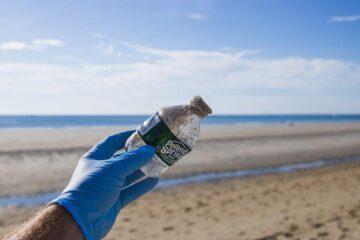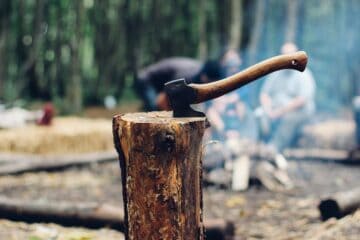We all need to be prepared for any emergency situation. A 72 hour kit is an essential part of being ready and having the necessary supplies in case of a disaster or other unexpected event. But why do we really need one? Reasons why I need a 72 hour kit include: being able to provide basic needs such as food, water, shelter, warmth and first aid; giving you peace of mind that your family will have what they need during an emergency; and ensuring that you can take care of yourself if help isn’t available right away.
In this blog post we’ll explore these reasons further along with how to assemble your own 72-hour kit plus tips on maintaining it over time so it’s always up-to-date when needed most!
What is a 72 Hour Kit?
A 72 Hour Kit is an emergency preparedness kit that contains essential items to help you survive for at least three days without assistance. It should include enough food, water, and supplies to last you during a disaster or other emergency situation. The contents of your kit will depend on the size of your family and the type of emergencies you may face in your area.
Definition of a 72 Hour Kit
A 72 hour kit is a collection of items designed to provide basic needs such as food, water, shelter, first aid supplies and more for up to three days following an emergency event. This could be anything from natural disasters like hurricanes or floods, to man-made events like power outages or civil unrest. A well-stocked kit can make all the difference in helping you stay safe until help arrives or until it’s safe to return home.
Why You Need One
Having a properly stocked 72 hour kit is important because it gives you peace of mind knowing that if something happens suddenly – whether it’s natural disaster related or not – you have what you need right away instead of having to scramble around looking for things when time isn’t on your side.
Your kit should contain enough food and water for each person in your household as well as any pets they may have; first aid supplies; flashlights with extra batteries; clothing appropriate for the climate where you live; tools such as knives and duct tape; cash (in small denominations); copies of important documents such as birth certificates and insurance policies; pet care items if applicable; sanitation products like toilet paper and garbage bags, sleeping bags/blankets/pillows etc.; matches/lighters etc.; maps/GPS device etc.; radios with extra batteries, etc.
Where To Store It
Your 72 hour kits should be stored somewhere easily accessible but secure, so that only those who know about them can access them quickly when needed. This could be either inside your home near an exit door or outside close by in case evacuation becomes necessary due to flooding or fire danger etc. If possible, store multiple kits throughout different areas within easy reach just in case one gets damaged during an event. Additionally, consider storing some nonperishable foods separately from the main kits since these are likely going to get used more often than others; for example canned goods which don’t require cooking fuel sources.
Having a 72 hour kit is essential for any emergency preparedness plan. It contains the basic supplies and gear needed to survive for up to three days in an emergency situation. Next, let’s look at what should be included in your 72 hour kit.
What Should Be in a 72 Hour Kit?
It should include basic supplies and gear, food and water considerations, as well as additional items depending on your needs.
Your 72 hour kit should contain the basics such as a first aid kit, flashlight with extra batteries, knife or multi-tool, matches/lighter in a waterproof container, whistle for signaling help if needed, and dust mask to filter contaminated air particles from smoke or ash during disasters like wildfires or volcanic eruptions. Additionally, you’ll want to pack clothing appropriate for the season including rain gear if necessary along with sturdy shoes/boots.
Food and Water Considerations: When it comes to food and water you need enough of both for everyone in your family or group for at least three days. Non-perishable foods such as canned goods are best since they have a longer shelf life than perishable foods but make sure to check expiration dates regularly so nothing goes bad before its time. Also consider packing protein bars which provide energy when needed most while having a long shelf life too. As far as water goes aim for one gallon per person per day plus some extra just in case something unexpected happens like getting lost while out hiking etc…
Depending on where you live there may be other items that would be beneficial to add into your 72 hour kit such as insect repellent if mosquitoes are prevalent in your area; sunblock lotion; fire starter material (dryer lint works great); camping stove; portable radio; cash (small bills). Make sure whatever else you decide to include is lightweight yet durable enough that it won’t break easily under pressure from being jostled around inside the bag during transport.
Having a 72 hour kit is essential for emergency preparedness. Assembling the necessary supplies and gear, creating an emergency plan, and packing it in an easily accessible place will help ensure you are ready when disaster strikes. Next, we’ll discuss how to assemble your 72 hour kit.
How to Assemble Your 72 Hour Kit?
Assembling a 72 hour kit is an important step in emergency preparedness. It’s essential to have the necessary supplies and gear on hand in case of an emergency or disaster, so you can survive without assistance for at least three days. Here are some tips on how to assemble your own 72 hour kit.
Gather the Necessary Supplies and Gear: Start by gathering all the basic items that should be included in any survival kit, such as food, water, first aid supplies, flashlights and batteries, blankets or sleeping bags, clothing and shelter materials like tarps or tents. Make sure to include enough of each item for everyone who will be using it. Also consider adding items specific to your region such as insect repellent if you live in a mosquito-prone area or extra layers of warm clothing if you live somewhere cold.
Put Together an Emergency Plan for Your Family or Group: Once you’ve gathered all the necessary supplies and gear for your 72 hour kit, it’s time to create an emergency plan with your family or group members. This plan should include details about where everyone will meet up during an emergency situation; what routes they will take; who has access to certain resources; when communication should occur between individuals; etcetera. Having this plan ready ahead of time can help ensure that everyone stays safe during a crisis situation.
Now that you have everything gathered together for your 72 hour kit, it is important to store it properly so that it is easily accessible when needed most – in times of emergencies. Store all items together inside one large bag or container (preferably waterproof) and keep them close by but out of reach from children at home or work depending on where they may need access quickly during a crisis situation.
You may also want to consider keeping additional copies of important documents like passports stored away separately from the main bag just in case something happens while traveling abroad with only one copy available otherwise.
Having a 72 hour kit assembled and ready to go can give you peace of mind that you are prepared for any emergency. Now let’s look at the benefits of having this kit on hand.
Benefits of Having a 72 Hour Kit Ready?
It’s designed to provide you with the basic necessities for survival in case of an emergency, such as a natural disaster or other unexpected event. A well-stocked and organized 72 hour kit can give you peace of mind knowing that you have the supplies needed to survive without assistance for at least three days.
Peace of Mind Knowing You’re Prepared for Emergencies: Having a 72 hour kit gives you peace of mind knowing that if something were to happen, like a hurricane or earthquake, you would be able to take care of yourself and your family until help arrives. The contents should include enough food, water, clothing and medical supplies to last each person in your household up to three days. Additionally, having items like flashlights and radios can make it easier for first responders or rescue teams to locate your home during times when power may be out due to storms or other disasters.
Increased Safety During Disasters or Other Emergencies: In addition to providing basic needs during emergencies, having a properly stocked 72 hour kit can also increase safety by providing essential items like first aid kits and fire extinguishers which are often overlooked but could save lives in certain situations. Keeping extra blankets on hand will also ensure everyone stays warm if temperatures drop suddenly due unforeseen circumstances such as power outages caused by severe weather conditions.
Having a 72 hour kit ready is essential for emergency preparedness and gives you peace of mind knowing that you are well-equipped to survive during disasters or other emergencies. With these tips, you can ensure your 72 hour kit is always up-to-date and ready when needed.
Tips for Maintaining Your 72 Hour Kit?
Having a kit that is ready to go in case of an emergency can give you peace of mind and help keep you safe. Here are some tips for keeping your 72 hour kit up-to-date and ready for any situation.
Check Expiration Dates on Food and Water Regularly: It’s important to check the expiration dates on food items stored in your 72 hour kit regularly, as expired food may not provide the nutrition or energy needed during an emergency situation. Additionally, water should be replaced every six months due to potential contamination from bacteria or other microorganisms over time.
Replace Used or Worn Out Items Immediately: If any item in your 72 hour kit has been used, it should be replaced immediately so that you have enough supplies if another emergency arises. This includes things like flashlights, batteries, first aid kits, tools and other items that may need replacing after use.
Rotate Food and Water Every Six Months: To ensure freshness and safety of food items stored in your 72 hour kit, it’s best practice to rotate them out every six months or so with new items purchased at the store before they expire. This will also help prevent spoilage from occurring while storing them long term in a cool dry place such as a basement or garage where temperatures remain relatively consistent year round.
Having a well maintained 72 Hour Kit can make all the difference when disaster strikes suddenly without warning. Having one already packed with essential supplies will save valuable time when seconds count, and could potentially be life-saving.
FAQs in Relation to Reasons Why I Need a 72 Hour Kit
Why would you need a 72-hour kit?
It contains all the necessary items to help you survive for three days in case of a disaster or other emergency situation. These kits should include food, water, shelter, first aid supplies, tools and communication devices such as radios and cell phones. Having a 72-hour kit ready can give you peace of mind that you are prepared for whatever may come your way and provide some security during uncertain times. It is important to regularly check and update your kit with fresh supplies, so that you are always ready in case of an emergency.
Conclusion
It provides you with the necessary supplies to survive for three days in case of an emergency. Knowing what should be included in your kit, how to assemble it and maintain it will ensure that you are well-prepared when disaster strikes. Having a 72 hour kit can give you peace of mind knowing that you have taken steps to protect yourself and your family from potential disasters. With all these reasons why we need a 72 hour kit, there’s no excuse not to have one ready!
It is essential to be prepared for any emergency, and having a 72 hour kit can help you survive in the wilderness or during natural disasters. It’s important to have an adequate supply of food, water, shelter items, first aid supplies and other necessities when facing uncertain situations. Investing in a quality 72 hour kit will ensure that you are well-equipped with all the necessary tools needed for survival. Don’t wait until it’s too late – get your own 72 hour kit today!


